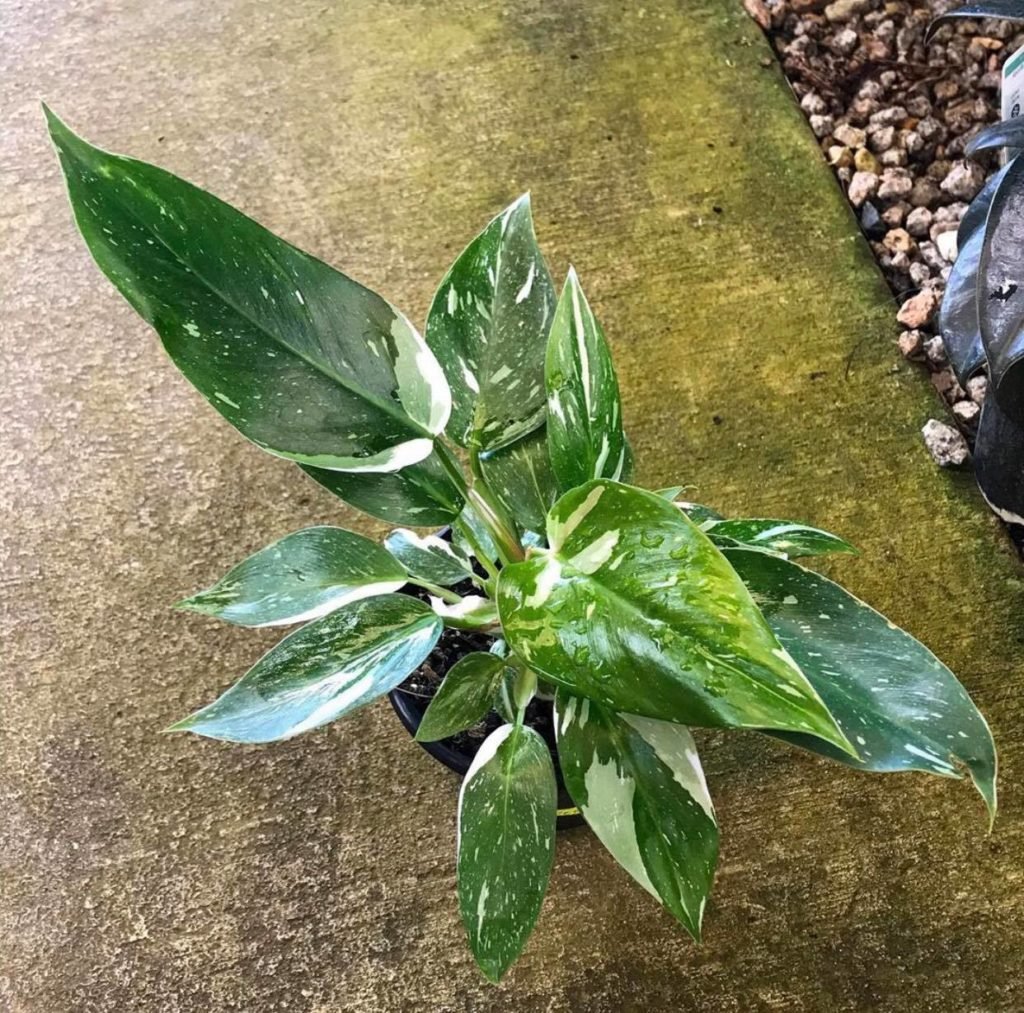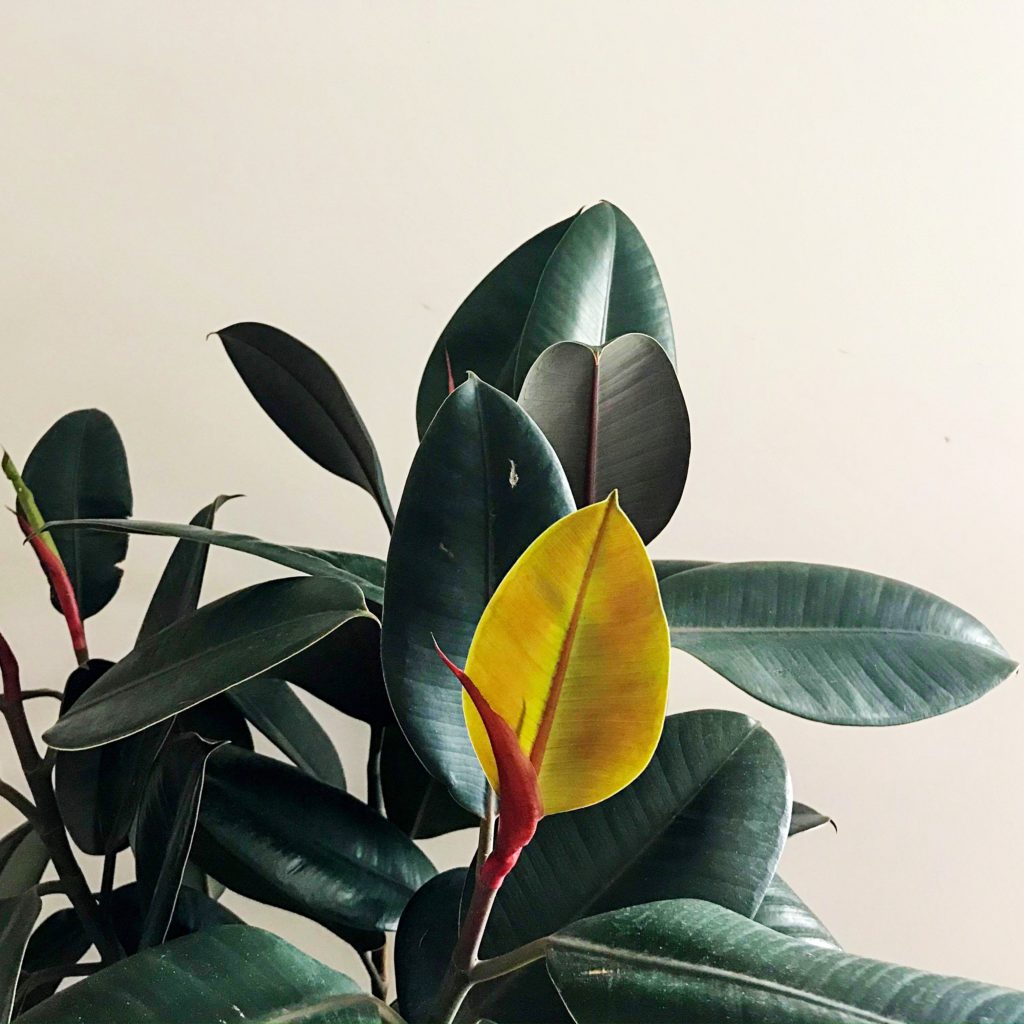
Philodendron Erubescens ‘White Princess’ a.k.a Philodendron White Princess
Philodendron White Princess has stunning green and white variegated foliage. This plant is part of the Araceae family and native to South America. Fairly easy to care for, this plant is a must have in your plant collection. Below we will go through the basic care requirements of your Philodendron White princess to give you the knowledge you need to keep yours thriving.
The White Princess Philodendron hybrid plant are very similar in appearance to the white knight philodendron. The difference in which is identifiable by the coloration of the plants stems. A dark pink/ purple stem variegation is the coloration of a white knight philodendron, whereas a green stem is that of the white princess.
White Princess Quick Care Overview
| Full Size | Over 3 metres |
| Light | Bright indirect |
| Temperature | 60-75˚F (15-23°C ) |
| Humidity | 50-70% |
| Cost | $$ |
| Care Level | Easy |
| Toxicity | Toxic |
White Princess Size
The mature size of a Philodendron White Princess can be over 3 metres in length. The foliage can reach 20cm in length. The typical size of a Philodendron White Princess when grown indoors is around 1 metre in length.
This plant is a self-heading plant which means it can support itself and doesn’t require a pole or trellis. Depending on the living conditions, it can be quite slow growing and can take up to 10 years to reach its full size.
Light Requirements For White Princess
Philodendron White Princess grow best when kept in bright indirect light and require this to thrive. You should try and avoid any direct sunlight as the harsh rays can burn the foliage. The white variegation will burn a lot easier and faster than the green areas. A sign that your Philodendron White Princess is receiving too much light is yellowing and/or burnt leaves.
A long and leggy plant and/or stunted growth can be a sign that your Philodendron White Princess isn’t receiving enough light. Moving your plant to a spot where it receives bright filtered light will help keep it happy and healthy. Lack of bright light can also cause your White Princess to lose its variegation.
If your plant is housed in a spot that receives direct sunlight, adding a blind or curtain to your window will help to defuse the harsh sunlight to avoid burning the plants foliage. Alternatively, if you can’t seem to find that perfect spot in your home, you can always use grow lights.
Just like direct sunlight, if your plant is sitting too close to the grow lights, they will burn the foliage. Keeping a safe distance of at least 60cm between your plant and the light will avoid any trouble.
Temperature Requirements For White Princess Philodendron
The ideal temperature for growing Philodendron White Princess is between 60-75˚F (15-23°C ). Since this plant is from tropical areas, it loves warm environments and can be sensitive to the cold.
If the temperature drops below 55ºF (12ºC), your Philodendron White Princess may experience stunted growth, drooping leaves and/or pale leaves.
Humidity
White Princess Philodendron will thrive when kept in a humidity environment between 50%-70%. Growth will be slow or it will not grow at all if it is kept in a spot with low humidity. Keeping your plants in a spot where the humidity is too low can make them more vulnerable to pests and diseases.
Providing a high humidity for your plants will encourage bigger and healthier growth. There are a few thing you can do that can help bump up the humidity in your home. The things you can try are:
- Misting your plants
- Pebble trays
- Grouping plants together
- Humidifier
Watering Requirements
You can expect your Philodendron White Princess to require moderate watering (around once a week). This will change throughout the cooler months when the temperature and amount of sunlight is changing.
Before you water your plant, check to see if the top half of the soil is dry. If it’s dry, you can give your plant a drink. Drooping leaves can be a sign that your Philodendron White Princess needs water.
When it comes to watering your houseplants, you need to be cautious of over-watering. Excess water and poor soil can cause the soil to become waterlogged and this can cause root-rot. Rotted roots can no longer take in any water or nutrients to the plant. This can cause pest problems, fungus issues and possible plant death.
Ensuring the plant has adequate drainage and a well draining soil will assist in avoiding these common issues. A sign that you may have over-watered your Philodendron White Princess is yellowing and wilting leaves.
Soil Mix For White Princess Philodendron
Philodendron White Princess will grow best when planted in a rich well draining soil. To create a well draining soil, you can use a mixture of potting mix, orchid bark, perlite, peat moss and charcoal. These ingredients help to create better drainage and aeration.
Air flow is important in potting soil as it allows the plants roots to breath. Not having enough oxygen to the roots can eventually cause them to start rotting.
You can also add other organic materials like coco coir, coconut husk or mulch chunks to the soil to help retain moisture. When it comes to potting soil, you want to use a mix that will help hold moisture but won’t keep the soil soggy.
Adding garden compost or worm castings to the soil will add more richness that White Princess will love. It’s best to use a pot that has drainage holes so the water can drain freely and not cause the soil to become waterlogged.
Fertilizing Requirements
You should fertilise your Philodendron White Princess monthly during Spring and Summer. You can cut back fertilising to every 6-8 weeks during Autumn and Winter.
Avoid applying fertiliser to dry soil as it may run straight through the soil and not be absorbed. Fertilising your plants will give them the essential nutrients they need for promoting and maintaining new and healthy growth.
The best fertiliser to use for Philodendron White Princess would be a balanced all purpose liquid fertiliser diluted to half strength.
If preferred, you can use a slow release fertiliser instead of a liquid fertiliser. Slow release fertilisers don’t need to be applied as often and the plant can take the nutrients as it needs them.
Apply the slow release fertiliser as per the instructions on the packet. Slow growth and/or small leaves can be an indication that your Philodendron White Princess has a magnesium and calcium deficiency.
When it comes to fertilising houseplants, you need to be cautious of over-fertilising. Over-fertilising your Philodendron White Princess can burn the roots and foliage.
If you think you have over-fertilised your plant, you can either change the soil or rinse the fertiliser out of the soil. You will notice the colour of the water will change to clear when the fertilizer has been rinsed out.
Philodendron Diseases & Pests
The most common pests that you can encounter whilst caring for your Philodendron White Princess are aphids, thrips and mealybugs. The common diseases you may encounter are root-rot and leaf spot.
The best thing you can do when it comes to pests on houseplants is to try and avoid any pest infestations from starting. There are a few things you can do that will assist in preventing any pest infestations and these things are:
- Checking new plants for pests or isolating new plants for up to a week.
- Check your plants every few days for pests.
- Trim off any dead or dying leaves.
- Wipe down leaves if you notice them getting dusty.
- Keeping your plants healthy. A healthy plant will be able to handle an infestation better than those that aren’t as happy.
- Isolate any plants that have pests.
Following this will assist in keeping pests away as well as catch them early on before any severe infestations are able to start. Keeping plants healthy and in the correct living environments can help to deter any pests from invading your plants.
Toxicity
Philodendron White Princess are considered to be toxic when eaten. All philodendron plants contain Calcium Oxalate Crystals which are toxic to both humans and pets.
Symptoms can include, but are not limited to the following; burning sensations and swelling of the lips, mouth, throat and tongue.



